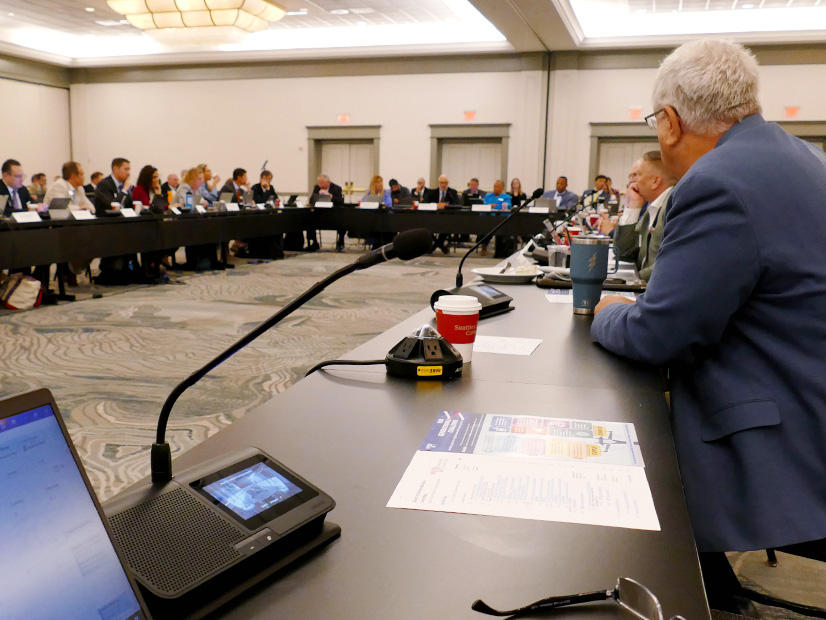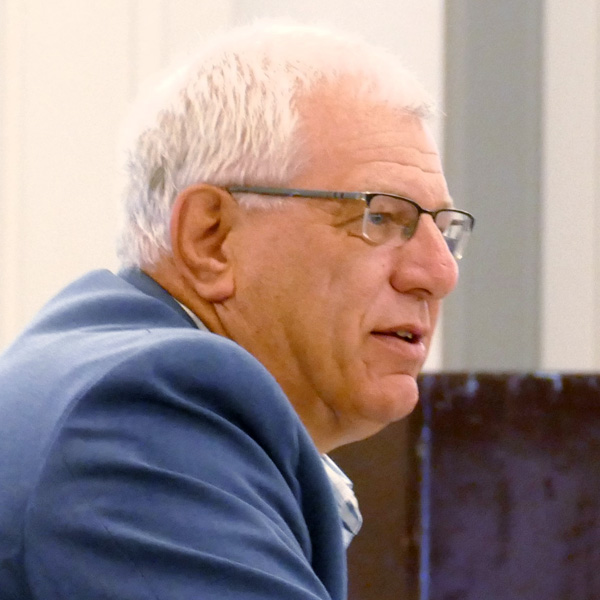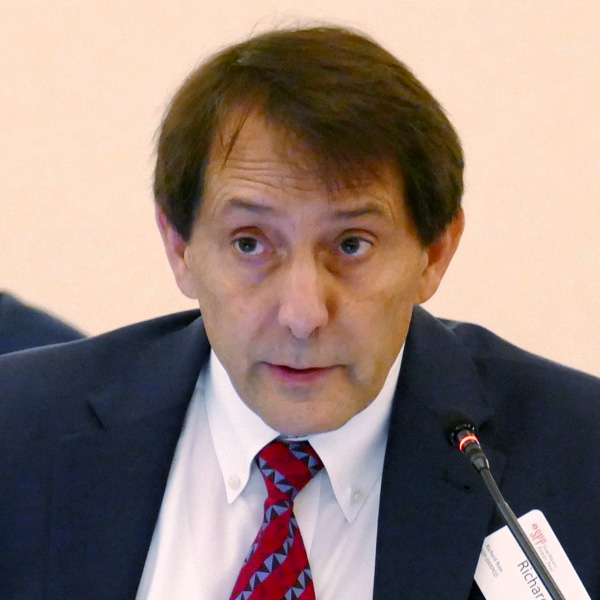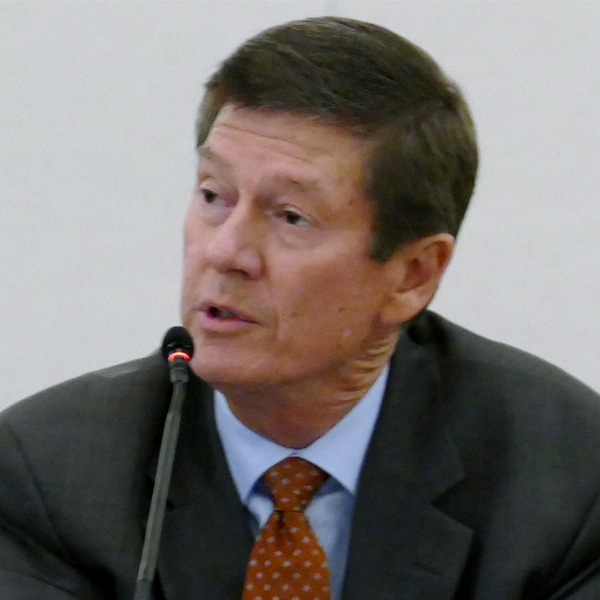SPP directors and regulators have approved the grid operator’s first winter planning reserve margin, endorsing a base PRM that is 3 percentage points higher than many of its utilities wanted.
Board Approves 36% PRM for Winter over Stakeholder Objections
ST. LOUIS — SPP directors and state regulators have approved the grid operator’s first winter planning reserve margin, endorsing a base PRM that is 3 percentage points higher than many of its utilities wanted.
The Board of Directors during its Aug. 6 meeting approved a 36% PRM for the winter season and a 16% margin for the summer season, effective 2026/27 and 2026, respectively. In doing so, the board sided with the Regional State Committee’s recommendation over that of the Market and Operations Policy Committee, which endorsed a 33% winter PRM.
The approval of the tariff change (RR622) capped months of discussions and deliberations by several stakeholder groups, including the Resource Energy and Adequacy Leadership (REAL) Team that is responsible for resource adequacy issues. (See SPP Markets and Operations Policy Committee Briefs: July 16-17, 2024.)
“I’m very disappointed that we did not agree to common ground with implementing the PRM,” SPP CEO Barbara Sugg said after the vote. “There are things I want to focus on that we all agree with. We agree that we have to get more steel in the ground, and we can’t do that fast enough. We agree nobody wants to explain why we have to shed load or why we’ve been turning away load. Nobody wants to tell customers why the rates are going up. It goes without saying nobody wants to find themselves paying for [RA] deficiencies.
“Again, I’m disappointed when we can’t reach consensus. It’s not who we are. But I know we all want the same thing. We want a reliable, affordable system. We have more work to do to achieve that.”
SPP said the action marks the first time a winter PRM requirement has been defined separately from the summer requirement and was necessary to ensure member utilities acquire enough generating capacity for both seasons. The RTO’s load-responsible entities must have access to enough generating capacity to meet their peak consumption by at least a 36% margin during the winter and at least 16% margin during summer.
The grid operator says severe extreme weather has become “increasingly common” in recent years. The February 2021 winter storm forced SPP to shed load for the first time in its then-80 years of operation. During the December 2022 winter storm, the RTO’s staff was forced to curtail almost 6.5% of demand to prevent uncontrolled outages after a higher-than-expected level of coal-fired generator outages and derates.
“Winter is becoming our trouble season,” RSC President John Tuma said.
SPP’s 2023 loss-of-load study, the first to directly analyze seasonal risk beyond summer, found that a 15% PRM would not meet a 1-in-10 loss-of-load expectation in either season.
The grid operator’s Market Monitoring Unit said it saw 36% as a minimum threshold. It preferred a 37% PRM to allow for extra maintenance outages during winter.
Tuma likened SPP’s quest for the appropriate resource adequacy requirements to a fellowship’s travails straight out of fantasy novels.
“It’s a long journey that we’re on here at SPP … We’re at one of those points where you have a difficult lift,” he said. “You see that the trail turns ahead of you, and you don’t know exactly where it goes. This is difficult stuff. We understand that, but it’s unclear what’s coming around the corner, and we still need to go forward.”
“I wish someone would put together a trajectory that was giving us a pathway to growth and future … so that we know how much water to pack,” American Electric Power’s Richard Ross said. “I don’t want to get down that target and find out we’re going another 20 miles and not having enough water. Let’s not go on that trail and not be prepared.”
Ross was one of 12 Members Committee representatives to oppose the 36% PRM in the committee’s advisory vote for the board, with eight in favor and three abstentions. He said MOPC’s 33% recommendation “strikes the proper balance between what is needed to maintain reliability in the system and what is actually achievable, given the situations that we have.”
“What we really need to do, though, is figure out what we’re going to do for the long term, so we don’t yet again repeat this exact same conversation where SPP is cranking up the reserve margin,” Ross said. “I think you’ve heard from everyone that it takes five to six years to bring a resource online.”
“At 36%, the region as a whole has enough capacity to meet that requirement, but in all likelihood, the reality is a number of LREs [load-responsible entities] would be short in the near term,” said MOPC Chair Alan Myers, with ITC Holdings.
All 64 of SPP’s LREs met the 15% requirement for this summer.
However, Xcel Energy has issued a request for proposals as it faces the need for more than 3 GW of accredited capacity in its Southwestern Public Service (SPS) footprint. Arkansas Electric Cooperative Corp. CEO Buddy Hasten has said the organization will have to spend $2 billion on new dispatchable generating capacity to meet the requirements.
Tuma agreed that staff, the REAL Team and several stakeholder groups recognize the need for “critical, long-vision steps” beyond the current path.
“We’re soberly going into this knowing that there’s a lot more work in front of us. SPP is on an industrial transition, and it’s not going to be cheap,” he said. “We need to take this back to our commissions, take it back to our state leaders. It will cost money, but we need to do it smartly and wisely. If we don’t do it as part of SPP or MISO, it will be more costly. This is where reliability happens.”
Texas Public Utility Commissioner Lori Cobos cast one of two dissenting RSC votes against the 36% requirement, expressing concern over rising rates and supply chain issues that have increased construction costs.
“The challenge that I have on my end is trying to get to a place where I believe my LREs can feasibly work on these reserve margins that are coming in the next several years in a feasible but also affordable manner,” she said.
The board and RSC also approved a fuel assurance policy (RR621) that SPP says will further strengthen RA policies by placing additional emphasis on conventional resources’ performance during the season’s most critical hours and reduce the PRM’s socialization of capacity allocation.
The MC unanimously endorsed the change, with the Natural Resources Defense Council abstaining.
Rate Cap Increased 10.8%
The directors and members both approved the Finance Committee’s recommendation for a 10.8% increase in SPP’s rate cap, from the 46.5 cents/MWh set in 2021 to 51.5 cents/MWh, effective next year.
FC Chair Stuart Solomon said the bump in the rate cap is in line with previous increases that have averaged 11.2% every three years and will serve as a bridge between the current cap and projected expenses through 2028. He said the compound annual growth of inflation has outpaced the billing units and net revenue requirement (NRR) from 2018-2024.
SPP calculates its rate cap by dividing the budgeted NRR, including a true-up from prior periods, by the estimated amount of transmission service to be provided under the tariff in the coming calendar year.
“The rate cap is a longer-term planning measure that provides predictability for planning purposes,” Solomon said. “SPP has shown the cost-control over time, from 2018 to the present day, as the services increased very significantly over that period.”
More services mean additional staff, but Solomon noted the RTO’s staff ran a “whole lot” of model runs, all of which indicated a need to increase the cap.
The MC endorsed the increase with a 19-4 vote. AEP, Google, Oklahoma Gas & Electric and SPS all voted against the measure. Several members said they will support the rate increases but will focus more closely on the budget, which will be brought before stakeholders and the board in October.
“I am sympathetic [that] FERC’s continuing orders are getting more and more responsibility into the hands of the RTO. More and more compliance,” said Denise Buffington, Evergy’s director of federal regulatory affairs. “I just encourage the organization to continue their focus on their core mission. It’s nice to have staff, but really, how do we get steel in the ground, how do we get generation connected, how do we get transmission planned in an appropriate way? I will be looking at the budget very closely.”
GI Waivers to be Filed
The board approved staff’s proposal to file two waiver requests with FERC following a unanimous vote by the MC that will help SPP clear the backlog in its generator interconnection queue.
The first waiver would allow SPP to delay the 2024 definitive interconnection system impact study (DISIS) cluster’s first phase. The phase would begin after the 2023 DISIS second phase’s restudy is completed and posted in August 2025; without the waiver, the phase would start before the second phase of the 2022 and 2023 clusters and likely lead to unplanned restudies, staff said.
The second waiver would pause the opening of the 2025 DISIS cluster. Together, staff say they will ease conflicts with their effort to clear the GI queue’s backlog and transition to a new planning process. (See “DISIS Waivers Endorsed,” SPP Markets and Operations Policy Committee Briefs: July 16-17, 2024.)
“This really just reflects the reality of the situation that we’re in, in terms of the sheer magnitude and our customers’ generation figures that we’re seeing in the restudies that are resulting from that,” said Natasha Henderson, senior director of grid asset use for SPP.
“I know efforts to clear the queue are challenging … but it’s not fast enough,” Buffington said. “I still have a lot of concerns about the timing. We’re just asking you to be creative about how we can get the process moving more quickly. There’s a lot of concern about alleged queue jumping, but at some point, we’ve got to cut out speculative developers and get a concrete study and concrete development.”
SPP plans to transition to the consolidated planning process (CPP) in late 2026 after a transition period. Opening the 2025 DISIS would mean the cluster’s generation would “significantly” overlap with the CPP’s transition study and first annual assessment.
FERC’s approval of the waivers would enable the timely completion of backlog studies and allow time to further develop CPP. The grid operator has 416 requests in the GI queue totaling about 84 GW in proposed capacity, down from the original backlog of 1,139 requests for 221 GW of capacity.
SPP Responds to Deficiency Letter
CEO Sugg said staff are working to address FERC’s questions about the Markets+ tariff filing and “some of its nuances, particularly transmission usage.”
The commission on July 31 filed a deficiency letter asking the RTO to address 16 issues with its proposed day-ahead market offering in the Western Interconnection. FERC gave SPP 60 days to respond. (See FERC Finds SPP Markets+ Tariff ‘Deficient’ in Several Areas.)
“We’ve been working on formulating a response,” Sugg said. “We anticipate filing the response to those questions in the deficiency letter within the next 60 days.”
The Markets+ Participant Executive Committee has set aside an hour during its Aug. 13 meeting in Westminster, Colo., to discuss the deficiency letter with SPP legal staff.
OCC’s Hiett Leaves RSC
Oklahoma Corporation Commissioner Todd Hiett was a no-show for the RSC meeting Aug. 5, two days before he would give up his seat on the committee to seek treatment for alcoholism.
OCC staffer Jason Chaplin represented the state in Hiett’s absence.
Hiett, the RSC’s vice president, also stepped down as the OCC’s chair Aug. 7 but remains on the commission. Some lawmakers have asked for a special session to impeach Hiett. His fellow commissioners have called for his resignation and an independent investigation following two instances of public drunkenness and allegations of sexual misconduct. Hiett has refused to resign but offered to step down as chair.
The OCC elected Vice Chair Kim David as its new chair, and she will replace Hiett on the RSC.
The allegations against Hiett were first publicized last month by The Oklahoman, which reported that one incident occurred June 9 in the lobby of the hotel where the Mid-America Regulatory Conference was being held in Minneapolis. Hiett acknowledged to the newspaper that he had had too much to drink but could not remember any of his alleged actions.
In an additional piece of business, the RSC selected an “F Troop” as its Nominating Committee: Kansas’ Andrew French, Louisiana’s Mike Francis and South Dakota’s Kristie Fiegen. They will be responsible for selecting the committee’s 2025 term leadership.
2025 Operating Plan Endorsed
The board’s approval of its consent agenda included SPP’s 2025 operating plan, as recommended by the Finance and Strategic Planning Committees.
The plan is meant to provide a reference point for the highest priorities that will drive “significant” long-term gains for SPP and its members.
The consent agenda also contained recommended in-service date changes for a pair of competitive project certificates of convenience and necessity (CCNs) recently awarded to NextEra Energy Transmission Southwest (NEET SW). Staff urged approval of the transmission developer’s new in-service dates for its 345-kV Wolf Creek-Blackberry project in Missouri and Kansas and the 345-kV Minco-Draper line in Oklahoma, from Jan. 1, 2025, to July 15, 2025, and from July 1, 2024, to Jan. 31, 2025, respectively.
Staff also recommended new language for Evergy Kansas’ 345-kV Wolf-Creek-Waverly line to include re-termination at Wolf Creek, allowing NEET SW’s Wolf Creek-Blackberry project to progress without crossing the two lines.
NEET SW has been awarded SPP’s last three competitive projects. (See “Expert Panel Awards Competitive Project to NextEra Energy Transmission,” SPP Board of Directors/Members Committee Briefs: Oct. 26, 2021 and SPP Board of Directors/Markets Committee Briefs: April 26, 2022.)
The consent agenda additionally included: Emeka Anyanwu’s (the CEO of Lincoln Electric System) nomination to fill a vacant transmission-using member’s seat on the Human Resources Committee; cost increases for a 138-kV Western Farmers project and Omaha Public Power District upgrades; a sponsored upgrade study for terminal equipment at several Western Area Power Administration substations; and the withdrawal of NTCs for Western Farmers substation work and SPS 115-kV terminal upgrades.
Finally, the agenda had two tariff changes that:






